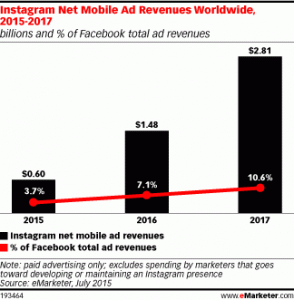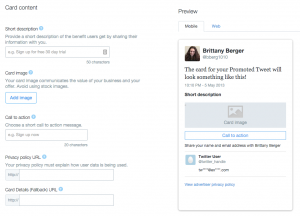— September 20, 2018
It wasn’t until a bunch of people started hunting for imaginary creatures, often in places they weren’t supposed to be, that industry professionals were convinced of the potential of augmented reality. While the success of Pokémon Go has tapered off, and we are years from living in the promised future where we are spammed to death by holograms, it is hard to deny the impact augmented reality is having on industries all across the world. From large companies developing their own technology to small businesses using existing platforms, the AR industry promises to grow significantly in the next few years.
For small business owners and digital advertisers looking for new ways to communicate with potential customers, it may be time to get in on the AR action. Even though it won’t completely revolutionize marketing and customer service, now is the perfect time to start using AR technology to create a new hybrid experience few other businesses can offer their customers.
Changing Consumer Preferences
Most business professionals understand that marketing and customer interaction is a bit like fishing: you have to go where the fish are. In this case, consumer trends and customer expectations influence a lot of how businesses operate these days. Whether you have a traditional brick-and-mortar store or an online business, if you do not cater to what your customers want, you are at a competitive disadvantage.
Now that the ecommerce space has proved its worth as a dominant form for everyday business, enough time has passed to see how users and customers prefer to shop and conduct business online. Recent trends, especially among the younger demographics, reveal that things are not as simple as “out with the old, in with the new.”
In fact, industry experts have tracked the rise of the “hybrid consumer experience” for the past couple of years. Taking the benefits and conveniences of online shopping/advertising with the more intimate experience businesses can offer, this hybrid approach tries to blend old and new ways of doing business. For example, despite popular belief, many Millennials continue to shop at local mom-and-pop stores while using their phones to research products, find good deals, or communicate with others.
This has been good and bad news for small businesses. On one hand, it means a typical small business does not have to abandon the old ways of advertising, servicing customers, and keeping track of logistical matters. At the same time, it has forced many owners to get creative when trying to use social media, paid advertising, and other digital channels of communication to convert potential customers.
Since this trend is expected to grow in the next few years, small businesses wanting to remain competitive, locally or online, need to think about how they can provide or cater to this hybrid approach. This is where the realities of AR can be beneficial today.
Hopping On The AR Bandwagon
Two things that prevent most people from adopting new AR apps and platforms are cost and uncertainty. It is no secret that adopting any new technology takes time, money, dedication, and some trial and error. If it hasn’t proved its worth and reliability, a new technology runs the risk of failure or not living up to the hype and promise.
The good news with augmented reality is the technology is at a state where small businesses and even individuals can utilize the commercial apps and programs that are available today without a great deal of risk. If you are thinking about trying out an AR platform for the first time for your business, there are a few ways you can enter into this new world right now.
Custom Content
The most direct approach to use an augmented reality platform for your business is with custom content and applications. Creating a native app designed to work with mobile devices, for example, is a common way large corporations have utilized AR technologies to create games, shopping assistants, product guides, and more. This is also how many businesses have made their mark in the AR space by pushing the envelope of digital marketing/brand awareness, customer interaction/service, and education. This trend has become so popular, in fact, its presence can be seen in industries from retail and gaming to real estate and education.
You can start creating custom AR content and apps regardless of the industry of your business. The main thing that has prevented many smaller businesses from taking this route are the resources necessary to create custom AR content. Unless you have personal knowledge and experience with content generation and programming, this can be a difficult route to take without the budget to hire professionals.
Do not make the assumption that this is the only way to utilize augmented reality for your own business endeavors. You do not have to reinvent the wheel, especially when other companies have paid for and done much of the research and development for you already.
Using Existing AR Platforms
Even though the technology hasn’t exploded in popularity, the use of AR in small and large business spaces is larger than ever. Large players like Snapchat, Wayfair, the BBC, and a whole slew of startups have created unique apps that anyone, including small businesses, can use for creative marketing and customer service purposes. It is easier to use an AR platform without the expense and development required when starting from scratch.
Snapchat’s Lens Studio, for example, provides a general content platform that individuals and companies can use to create custom content without investing in new infrastructure. The company has embraced a user-centered approach to content creation, even to the point of allowing users to create their own custom filters for others to use and enjoy. Individuals have used the medium to create unique narratives, advertisements, games, and experiences.
The use of existing augmented reality applications has exploded in certain industries. Education and real estate are two marketspaces where using AR has been intuitive. Real estate agents and interior decorators, for example, have enhanced the customer experience with design apps that make real-time previews of a location simple and interactive. Teachers and instructors can now provide more interactive classes, creating scenarios, challenges, and projects that would be impossible in the real world.
More creative entrepreneurial minds have found ways to use general AR apps and games for marketing purposes. From hosting “AR events” to turning a store into a Pokemon gym, the use of existing applications makes it easy to connect with other AR users.
Embracing Augmented Reality
The trick to using existing augmented reality platforms is to find something that fits your business. The industry you operate in may have a natural use for certain platforms. Other similar businesses may offer some inspirational examples as well.
Most importantly, think about if and how AR can enhance the customer experience. From creating unique advertisements to showing off different products, the promise of augmented reality is bridging the physical and digital. Allowing customers to experience things a physical or digital presence alone cannot provide is the key to success.
As customer preferences continue to favor a hybrid experience, AR is one tool that most small businesses can access today to accommodate growing expectations. Now just may be the right time to see how your business can get started with augmented reality.
Business & Finance Articles on Business 2 Community
(100)





